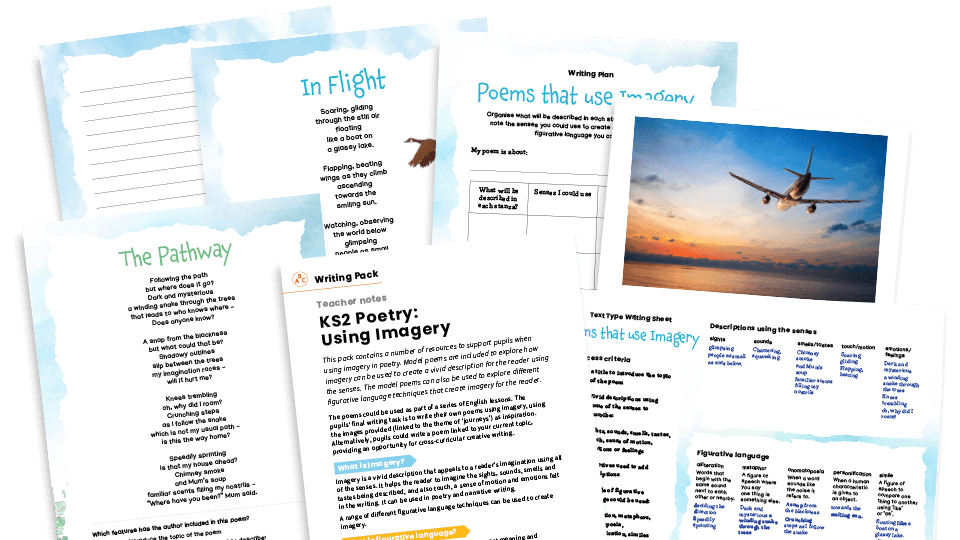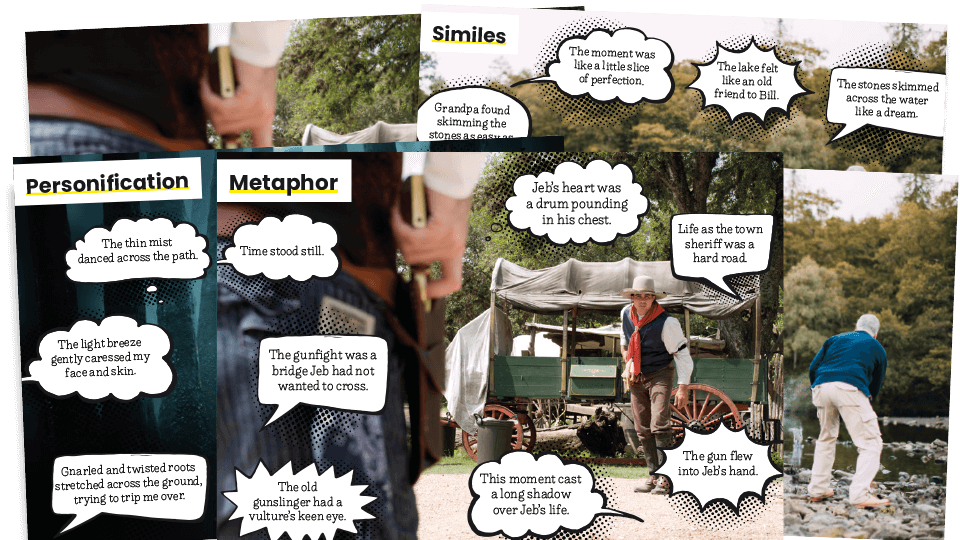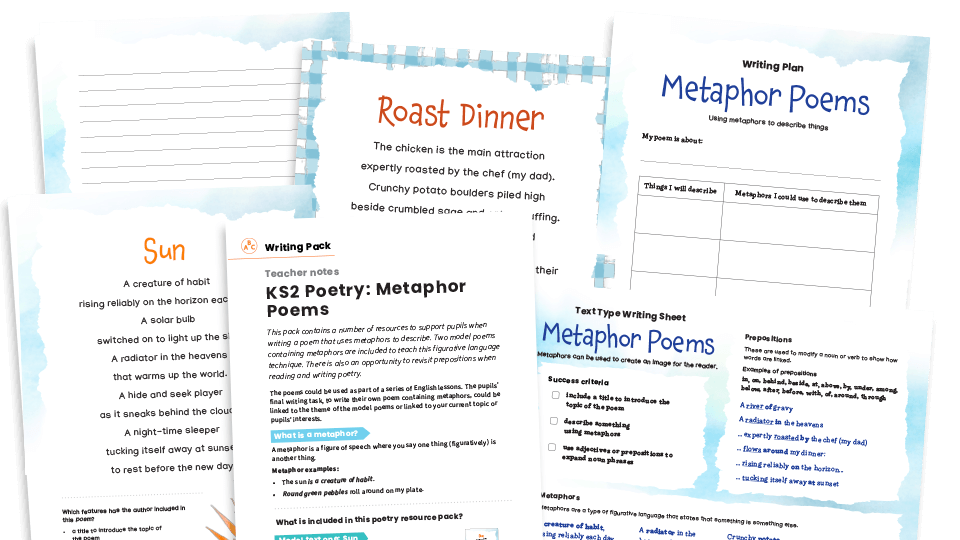How does the old saying go? A picture paints a thousand words. While that is undoubtedly true, it could also be argued that it works the other way too.
Well-chosen words can create pictures in our minds that are as vivid as any masterpiece by a skilful artist. What’s more, those same words can create subtly different images in the heads of every reader, depending on their own imaginations and experiences.
For proof, just look at any film adaptation of a book you have loved – the chances are that it will be slightly disappointing because what you see on the screen does not match the perfect vision you saw with your mind’s eye.
Creating imagery
The way a writer creates those images in your head is all down to imagery. The definition of imagery is language that uses devices such as similes and metaphors to create images in the reader’s mind.
It can fuel the imagination, dictate the mood and take you to places you’ve never been before. Being able to create imagery is a very powerful tool for any writer to possess, whether you’re drafting a poem, short story, picture book, song or even a non-fiction texts.
Imagery starts with reading
Like all powerful tools, imagery is something that you ought to see operated by an expert before you start to wield it yourself. That is why it is so important to immerse your pupils in quality texts from accomplished authors.
As well as teaching them all the tricks that will help them with their reading SATs, encourage them to absorb the imagery as much as possible.
It sometimes helps to encourage them to close their eyes while you're reading so that they can form their own mental pictures without being distracted by what they can see around the room.
Unless you have an encyclopaedic knowledge of suitable texts, if can be hard to go straight to the most appropriate examples. Let us save you the effort by directing you to our own resources, such as our classic poetry reading pack about Robert Louis Stevenson, for example, or our virtual ‘author visit’ podcast with poet Joseph Coelho, with accompanying resources.
Or you can try our imagery WAGOLL pack. This contains two model poems: one describing the emotions of following an unknown track through the forest and the other presenting a flock of geese gliding through the sky.

Mental images and description
What are examples of imagery? Well, if it is about creating mental pictures, then it has to start with description.
This is not just about choosing adjectives. It’s about selecting the best words, whatever they might be. A thesaurus can often help in these circumstances and you should urge your pupils to reach for them without hesitation.
However, it is also important to train them to notice the subtle differences in meaning between synonyms. Do they want to describe their dancer as stylish, for example? Or would their description be improved by a better adjective such as graceful or elegant?
Creating mood and theme with imagery
Imagery has a crucial role to play in creating the mood within a piece of writing. The same thing, described very differently, can create a vastly different mood.
Did moonlight sprinkle silvery magic across the garden, for example, or did the cold light conjure nightmarish beasts out of the shadows?
Encourage your pupils to pay close attention to the mood they want to create. For practise, why not try our attractive and inspiring challenge mat on creating mood?

Figurative language
Figurative language is a main stalwart of imagery. This is where writers unleash their own imaginations on their readers by using personification, simile and metaphor.
All three involve describing things by comparing them with something very different but, if chosen well, the effect can be revelatory.
An abstract concept, such as a season of the year, cannot take hold of anything in reality, yet we all know precisely what is meant by the icy grip of winter.
Similes and symbolism
As you'll know, similes involve using the words like and as to make comparisons. The main thing here is to urge your pupils to check that they are making a useful comparison. As cold as ice is useful; as cold as paper isn’t.
Metaphor and personification
Metaphor and personification often take the imagery a step further by stating that the object being described is something else – something human in the case of personification – rather than just saying it is like that.
Once again, urge your pupils to make sure their figurative language is creating the right effect. Terror choked off the words in his throat is appropriately chilling; terror asked him not to say anything is less so.
To hammer home the possibilities of figurative language, why not adorn your classroom walls with our simile, metaphor and personification posters, which illustrate each device in an appealing and amusing way?

Further embed the idea of using metaphors to create imagery in poetry with this metaphors WAGOLL pack containing two model poems, planning sheets and teacher notes.

Imagery in persuasive writing
Imagery, including all the tricks and techniques outlined above, is not just important in narratives; it also has its place in persuasive writing.
Frozen peas ‘as fresh as the day the pod went pop’ is a good example of the effective use of simile. No doubt you will have your own favourite advertising metaphors or personification, both visual and lexical.
As ever, though, the challenge for pupils is to select figurative language that deftly captures the essence of whatever proposition is being peddled.
Scary story writing
Helping pupils to develop these skills calls for a suitable context and what could be better than a scary story? We offer a comprehensive pack of resources for writing scary stories, including instructions, planners and model texts designed to create chilling tales, dripping with blood-curdling imagery.

Hopefully, this has painted a vivid picture of how to inspire your pupils to embrace all forms of imagery. We trust you’ll enjoy watching their writing blossom as a result.
Sue Drury qualified as a primary teacher in 1999. Teaching pupils from Year 1 to Year 8, she has held a variety of positions including maths and English subject leader, year leader, and assistant headteacher. Sue has mentored students and NQTs, offering guidance and advice using her years of experience. She created many of Plazoom's literacy resources.